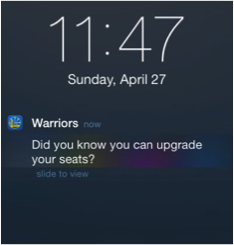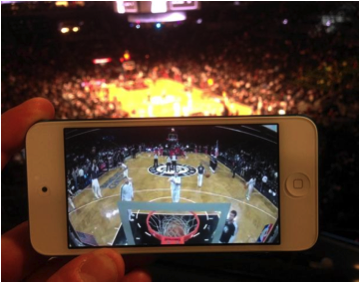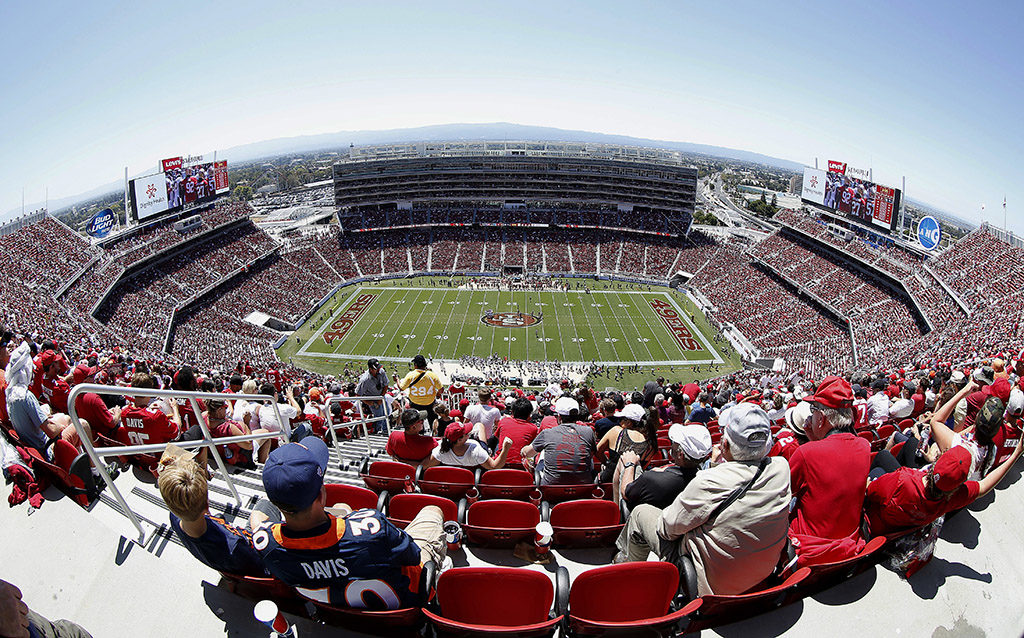Millennials’ love of mobile is nothing new but the level of that addiction might surprise you. A Cisco report revealed that the internet is as important as air, water, food and shelter to 1 in 3 college students and young professionals and the way they access it is through their phones. In other words, a third of Millennials feel they can’t live without being connected.
Really?? Can’t live? Seems a bit extreme but if that’s how they feel it’s unsurprising to hear that a large number of them “… leave at halftime at college games because they don’t have connectivity, and they don’t want to be in a connectivity black hole,” according to John Brams, Director of sports and entertainment for Extreme Networks.
When it comes to achieving Millennial bums on seats, connectivity is key for Stadiums. Keeping them connected also opens up a whole new world of digital opportunities that spell good news for stadiums as well as their patrons. You only need to look at Levi’s Stadium, home to the San Francisco 49ers, to see how next gen stadia should be done. Fair enough, they’re based in the heart of Silicon Valley so we’d expect nothing less but here’s some tech we feel every Smart Stadium should have:
 Mobile wayfinding. By using interactive maps, augmented reality or Bluetooth beacons, stadiums can direct fans to their seats, toilets, nearest entrance or exit or even concession areas, with perfect accuracy. HKIA are currently trialling this tech at their airport.
Mobile wayfinding. By using interactive maps, augmented reality or Bluetooth beacons, stadiums can direct fans to their seats, toilets, nearest entrance or exit or even concession areas, with perfect accuracy. HKIA are currently trialling this tech at their airport.- Interactive LED displays. As demonstrated by the AT&T Stadium, home to the Dallas Cowboys. These large screens are hard to ignore, dominating the airspace above the pitch and keeping fans involved and engaged with the game.
- Location-based marketing: The Warriors send welcome messages, promotions, upgrade offers for better seats, special concession deals and promotions for the team store based on the fan’s location around the Oracle Arena.
- Interactive mobile app: The Levi’s Stadium app allows fans to watch replays and even watch the game live on the app too. They can also get stats and other info related to the game. The Brooklyn Nets app even gives fans a bird’s eye view of the court.
- Mobile food order and pay: Unless you’re a yuppie in search of a signal, most fans want to stay seated and watch the action on the pitch. They don’t want to wait in line for food and drinks should hunger take them. Mobile enables fans order and pay for their food and drink which can then either be dropped off at their seat or they can pick it up at an express concessions lane.
 The CIOs among you may be wondering what kind of infrastructure your stadiums need to achieve this oasis of connectivity. According to Time, Levi‘s Stadium laid out 400 miles of cabling, 70 miles of which are dedicated to connecting the 1,200 antenna systems that serve the wifi routers that serve every 100 seats throughout the stadium. The stadium also features a backbone of 40GB per second available bandwidth – 40 times more than any known US stadium.
The CIOs among you may be wondering what kind of infrastructure your stadiums need to achieve this oasis of connectivity. According to Time, Levi‘s Stadium laid out 400 miles of cabling, 70 miles of which are dedicated to connecting the 1,200 antenna systems that serve the wifi routers that serve every 100 seats throughout the stadium. The stadium also features a backbone of 40GB per second available bandwidth – 40 times more than any known US stadium.
A smart stadium will not only help attract the Millennial market and keep them coming back but it’ll transform the game-going experience across the board no matter what age your fans are. And now that venues such as Levi’s and Oracle Arena are laying down the blueprint for the ‘Stadium of the Future’, it’s fair to say the race is on for others in the industry to capitalise on these technologies.
Main photo : Tony Avelar





